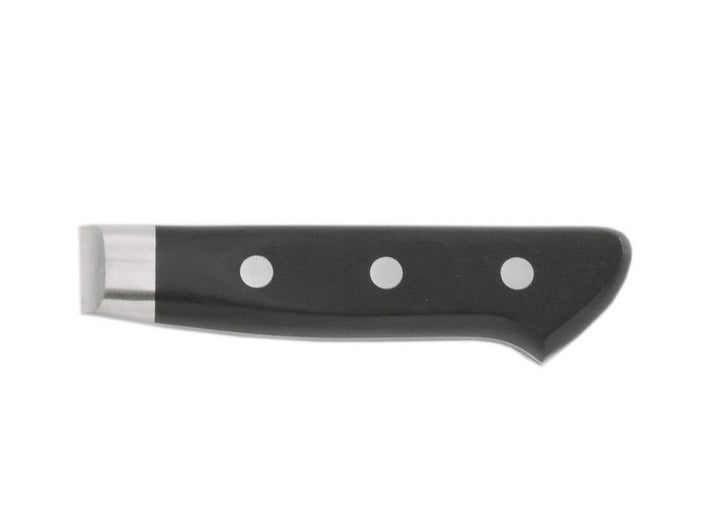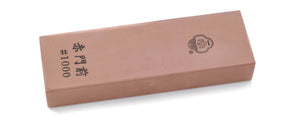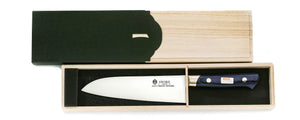
Shinco Series
Made with Japanese high-purity carbon steel, our Shinco Series is known for its quality sharpness while staying easy to sharpen. A superior heat treatment puts better toughness into the blade, making it easier to sharpen to a tighter angle. This gives the Shinco Series superior cutting power.
*NOTE: Carbon Steel is susceptible to rust if it is not properly cared for. Please clean and dry the blade regularly during use and after use.
| Product number | Actual Blade Length (mm) | Full Length (mm) | Total Weight (g) |
|---|---|---|---|
| 2mhc-210 | 210 | 320 | 175 |
| 2mhc-240 | 240 | 370 | 260 |
| 2mhc-270 | 270 | 405 | 300 |
| Blade | Material Name | Handle |
|---|---|---|

Double Edged |
ZCD-U | Compressed plywood handle with brim |

Gyuto
Gyuto, literally means "Beef knife". The Japanese did not consume beef until it began to modernise with increased Western influence in the late 1800's. During that period, when Japanese thought of Western food, they thought of giant slabs of beef being cut and grilled or stewed, thus the "Gyuto" was born. In modern times it is the most common knife in Japanese households, with also the most variety of steel,blade lengths and handle materials available.

Compressed Wood
This handle is made of a durable, compressed plywood, with a flange attached to improve balance. It's known for being very hygiene-friendly because water cannot easily get into the core wedged between the handle.

Mono Steel
Mono-steel knives, sometimes called single-steel knives, are made entirely of one piece of steel. Mono-steel knives have better cutting power versus clad and Damascus-finished knives with the same steel material. While mono-steel knives are vulnerable to impact damage, a master artisan can properly quench and remove the steel's distortions, removing this downside while creating a sharp cutting edge.

Optional Engraving
Optional Engraving Service
Sakai Ichimonji provides complimentary engraving using either Japanese Kanji or English Alphabet. Please specify your preference. For details, please visit here
A knife store that has supported the history of knives and food culture in Japan.
It has been 600 years since the birth of swordmaking in the Sakai region of Japan. Sakai Ichimonji Mitsuhide's and it's craftsmen continue to build on that legacy by producing the finest blades in Japan.
This is where the culture of completing a dish of sashimi by "just cutting" and the culture of expressing sharpness as "taste" was born.
For 70 years, we have been connecting the spirit of Sakai's craftsmen with the passion of chefs in Osaka's kitchen equipment shopping district, known as the kitchen of Japan.
We are very happy that our knives can be used by people all over the world.
Precautions
After use, wash off any dirt and wipe thoroughly with a dry cloth to remove any moisture. This product is not for use with frozen foods.This product is handmade, so each piece will be different. Please use the weight and length listed as a guide. Each material is natural and may vary in color. It is not the same as the picture.We take great care with our inventory, but in the unlikely event that we are out of stock, we will contact you by email to let you know.











































